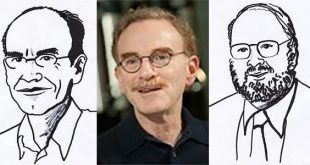Known as ENIGMA ,the project pools data from more than 200 researchers, at more than 100 institutions, worldwide.
The first results from the world’s largest brain study – comparing the brain scans and genetics of more than 15,000 people – have found two single mutations that may influence the size of our brain’s memory centre and the space inside our skull.
Known as ENIGMA – Enhancing Neuro Imaging Genetics through Meta-Analysis – the project pools data from more than 200 researchers, at more than 100 institutions, worldwide.
“We now have enough brain scans to pick up the effects of single variants in the genetic code,” Paul Thompson, study co-author and Professor of Neurology at UCLA, told Science-Fare.com. “ENIGMA now allows any researcher worldwide to look up whether a gene of interest to them affects the brain.”
From a larger pool of more than 20,000 people, the researchers found a mutation that was associated with a smaller hippocampus – a region of the brain associated with learning, memory and many neuropsychiatric disorders, like schizophrenia and bipolar disorder.
Each time the mutation’s present – because we’ve got two copies of our DNA, it can be present twice – the researchers found it was associated with a decrease in the size of our hippocampus by as much as 1.2 per cent, each time it’s present.
“That would be equivalent to about three-to-five years of brain aging, Thompson said. “By the time your brain tissue loss is about ten per cent below normal, you begin to see symptoms of decline and behavioural change.”
The location of the mutation is interesting too. Located between two genes known to be expressed in the brain, the researchers found it interacted with another one further away, known as TESC.
“It’s a very well-known gene that affects cell proliferation, division and differentiation during development,” Thompson said. “Because the gene’s been so well studied, it becomes a very likely candidate for controlling brain size, particularly the size of the memory centre – the hippocampus.”
When the researchers looked at a subset of the data that included expression of brain genes post-mortem, they found a decreased expression of the TESC gene too – despite being most prolific during development, it’s still expressed moderately in adulthood.
To see another way these single mutations can affect neighboring gene expression, meet Ötzi. He’s lactose intolerant because he lacks a similar, single mutation that promotes the continued expression of the lactase gene after infancy.
The researchers also identified a single mutation in the HMGA2 gene that’s associated with a larger intracranial volume – the space in your skull for a brain. Previously, researchers found it to be associated with height too.
Each time the mutant allele’s present, the researchers found an increase in intracranial volume of 0.58 per cent.
How it affects HMGA2 gene expression isn’t clear, but a different group of researchers has found the miRNA let-7, targets the same region where the mutation’s present.
When the researchers looked at a subset of data – ENIGMA’s actually composed of 23 different cohorts – the researchers found the mutation’s also linked with a slight increase in IQ of 1.29 points each time the mutant allele’s present.
More interestingly, the group is made of twins.
“When you have twins you can look at the genetic relationship between two traits,” Thompson said. “The way twins give you leads is that you can often find a link between a gene and something easy to measure.”
In this case, the researchers wanted to know if the mutations they described were related to IQ.
The researchers did what’s called a cross-twin, cross-trait analysis. Using identical twins, they measured the intracranial volume of twin A and compared it to the IQ of twin B.
If the association is genetic, the information should allow them to predict the IQ of twin A more often than not.
Then, they repeated the experiment with fraternal twins. Because they don’t share exact copies of DNA like identical twins do, the prediction should only be right, at most, half the time – like the odds of guessing heads on a coin.
When they repeated the experiment with the TESC gene, they couldn’t find the same association.
The strength of Project ENIGMA – named after the machine used to encrypt messages during the Second World War – is that it leverages a ton of information, without sharing anything specific.
“We don’t have anyone’s genome,” Thompson said. “That lowers the bar to participate – the privacy issues are all safeguarded by the hospital.”
“Data sharing isn’t forced and people don’t have to part with their genomic data or their brain scans,” he added.
But, by crowd-sourcing the results, researchers can take a look at small changes likely to affect the larger population – sort of like being able to make the same scale of judgments about Earth now that we can see it from space.
ENIGMA can get better though. Despite having more than 20,000 participants, it’s virtually representative of the white, developed world – only one of the cohorts looks at Mexican-American ancestry.
“We really want to improve the ethnic diversity in ENIGMA,” Thompson said. “The larger groups that aren’t represented come from Asia and Africa.”
The first results have been organized into a database that you can search here.
The research was published in the journal Nature Genetics.
 Science Fare Media Science News – Upgraded
Science Fare Media Science News – Upgraded


